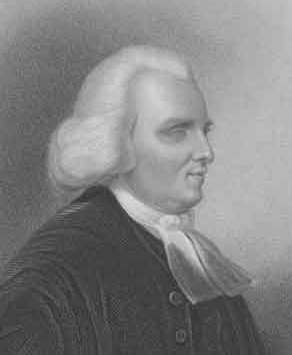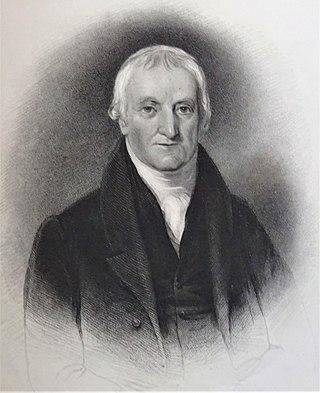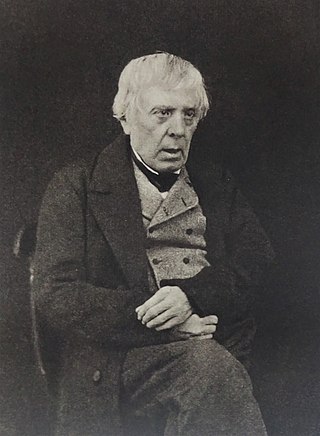Related Research Articles

Phrenology or Craniology is a pseudoscience that involves the measurement of bumps on the skull to predict mental traits. It is based on the concept that the brain is the organ of the mind, and that certain brain areas have localized, specific functions or modules. It was said that the brain was composed of different muscles, so those that were used more often were bigger, resulting in the different skull shapes. This led to the reasoning behind why everyone had bumps on the skull in different locations. The brain "muscles" not being used as frequently remained small and were therefore not present on the exterior of the skull. Although both of those ideas have a basis in reality, phrenology generalizes beyond empirical knowledge in a way that departs from science. The central phrenological notion that measuring the contour of the skull can predict personality traits is discredited by empirical research. Developed by German physician Franz Joseph Gall in 1796, the discipline was influential in the 19th century, especially from about 1810 until 1840. The principal British centre for phrenology was Edinburgh, where the Edinburgh Phrenological Society was established in 1820.

Thomas Blacklock was a Scottish poet who went blind in infancy.

Jean Armour, also known as the "Belle of Mauchline", was the wife of the poet Robert Burns. She inspired many of his poems and bore him nine children, three of whom survived into adulthood.

The Edinburgh Phrenological Society was founded in 1820 by George Combe, an Edinburgh lawyer, with his physician brother Andrew Combe. The Edinburgh Society was the first and foremost phrenology grouping in Great Britain; more than forty phrenological societies followed in other parts of the British Isles. The Society's influence was greatest over its first two decades and declined in the 1840s; the final meeting was recorded in 1870.

Dr William Alexander Francis Browne (1805–1885) was one of the most significant British asylum doctors of the nineteenth century. At Montrose Asylum (1834–1838) in Angus and at the Crichton Royal in Dumfries (1838–1857), Browne introduced activities for patients including writing, group activity and drama, pioneered early forms of occupational therapy and art therapy, and initiated one of the earliest collections of artistic work by patients in a psychiatric hospital. In an age which rewarded self-control, Browne encouraged self-expression and may therefore be counted alongside William Tuke, Vincenzo Chiarugi and John Conolly as one of the pioneers of the moral treatment of mental illness. Sociologist Andrew Scull has identified Browne's career with the institutional climax of nineteenth century psychiatry.
"Browne was one of the reformers of the asylum care of the insane whose improvements and innovations were chronicled in his annual reports from The Crichton Royal Institution, but who in addition published almost on the threshold of his career a sort of manifesto of what he wished to see accomplished...." Richard Hunter and Ida Macalpine (1963) Three Hundred Years of Psychiatry 1535–1860, page 865.

Robert Burns, also known familiarly as Rabbie Burns, was a Scottish poet and lyricist. He is widely regarded as the national poet of Scotland and is celebrated worldwide. He is the best known of the poets who have written in the Scots language, although much of his writing is in a "light Scots dialect" of English, accessible to an audience beyond Scotland. He also wrote in standard English, and in these writings his political or civil commentary is often at its bluntest.

Ellisland Farm lies about 6.5 mi/10.4 km northwest of Dumfries near the village of Auldgirth, located in the Parish of Dunscore, Dumfries and Galloway, Scotland. The complex is a museum in the farm Robert Burns built, lived in and farmed from 1788 until 1791. One of the earliest references to the site is in 1465. Cardinal Antonius confirming a Charter by the Monastery of Melrose of the adjoining property of Ellisland to John Kirkpatrick.

Helen Anne Park, known as Anna Park or Ann Park, was born in 1769 at Moffat, Scotland. She was thought to have been the daughter of Joseph Park, an Edinburgh coachmaker, and Jean Dick. However, recent research has shown that she was actually the daughter of Walter Park and Elizabeth Blacklock. Margaret Ewing née Park, a onetime landlady of 'The Globe', was her sister and she worked there as a barmaid. Anna bore the poet Robert Burns an illegitimate child named Elizabeth 'Betty' Burns as a result of an adulterous affair.

Jessie Lewars, also known as Mrs. James Thomson, was the youngest daughter of John Lewars, a supervisor of excise. Following the death of her 69-year-old father in 1789, Jessie was only 11 years old, when she and her brother John moved to a house in Millhole Brae that lay opposite that of Robert Burns in Dumfries. Jessie was a close Burns family friend and when nearly at the age of eighteen helped the family by nursing Robert in the days leading up to his death and doing the domestic chores.

The Boston Phrenological Society was formed in 1832 upon the death of a prominent continental phrenologist, Johann Gaspar Spurzheim. Spurzheim was an anatomist and a former pupil of Franz Josef Gall. Spurzheim's brief tour and death popularized phrenology in the United States outside of its controversial place in medical lecture halls, and into the sphere of social reformers and ministers. The Society's formation launched the phrenology movement in the United States. The Boston Phrenological Society was founded by phrenology adherent Nahum Capen on the day of Spurzheim's funeral, November 17, 1832.

James Pagan (18 October 1811 – 11 February 1870) was a Scottish reporter and managing editor for the Glasgow Herald and a noted antiquarian. He is credited with transitioning the Herald from a tri-weekly publication to one of the first daily newspapers in Scotland as well as greatly improving the standard of reporting in that country.
James Armour was a master mason and father of Jean Armour, and therefore the father-in-law of the poet Robert Burns. His birth year was shown here as 1730. The Scotland's People database has no record of this year of birth for a James Armour. Wikitree and several other data sources have his birth date as 10th/24th January 1731. The Scotland's People database has this record but showing his baptism on 24 January 1731. His birth on the original Old Parish Record is shown as 15 January 1731 to John Armour and Margrat(sic) Picken in Kilmarnock. James named his first son John which would normally be after James's father i.e. John. The chances of there being two James's born on exactly the same date exactly one year apart appear very remote and the naming of the first child seems to validate the conclusion that James Armour was born in 1731 and not 1730.

Alexander Cunningham was one of Robert Burns's closest friends from his time in Edinburgh. They stayed in contact, through at least 19 letters from the poet; and Cunningham was the ardent admirer who encouraged and joined others such as John Syme to raise funds for the poet's family after his death. Cunningham was one of the small group of associates whom Burns actively approached for constructive criticism of his work.

John Syme was a Scottish lawyer and one of the poet Robert Burns's closest friends during his time in Dumfries. In the summers of 1793 and 1794 he joined Burns on his two short tours of Galloway. Syme and Alexander Cunningham were amongst the most active of the friends and admirers of Burns's works who raised funds for the poet's family and for his mausoleum with the assistance of others such as James Currie. Together with Dr Willam Maxwell he arranged Burns's funeral.

Francis Wallace Burns (1789–1803) was the second son of the poet Robert Burns, born when the poet was 30 and his wife Jean Armour was 24. Francis was born at Ellisland Farm in Dunscore parish, Nithsdale on the 18 August 1789. His first and middle names were added in honour of Frances Dunlop of Dunlop, Robert's friend, patron and mentor. Her maiden name was Frances Anna Wallace and what is known of his early life comes from the many letters to Frances in which he was mentioned. His father died in 1796 and little is known of Francis's short life after this date.

James Glencairn Burns (1794–1865) was the fourth son and eighth child born to the poet Robert Burns and his wife Jean Armour. James was born at their home in Mill Brae Street, now Burns Street in Dumfries on 12 August 1794. His first and middle name was added in honour of James Cunningham, 14th Earl of Glencairn, Robert's friend, patron and mentor.

William Nicol Burns (1791–1872) was the sixth child, third born and second surviving son born to the poet Robert Burns when he was 32 and his wife Jean Armour was 26. William was born at Ellisland Farm in Dunscore parish, shortly before the family moved to Dumfries in 1791. His first and middle name was added in honour of William Nicol, Robert's friend.

Robert Burns Junior or Robert Burns ll (1786–1857) was the first son and one of the first pair of twins born to the poet Robert Burns and his wife Jean Armour. He was born on the 3 September 1786 and baptised on 5 September. John Tennant of Glenconner was a witness at the baptism. His twin sister was Jean Burns, who died of unknown causes in infancy on 20 October 1787. His father, who often called him 'Bobbie', died when Robert Junior was only nine years old, at which point he was the eldest of a family of five legitimate male offspring.

William Maxwell (1769–1826) was a medical doctor who treated Robert Burns during his final illness. He was one of Robert Burns's intimate friends during his Nithsdale and Dumfries days, noted for his Jacobite links that struck a chord with the poet's own symapthies. His father, James Maxwell, took part in the 1745 uprising, and his grandfather, William, had fought in the 1715 uprising. Maxwell never married, but fathered a natural daughter, Elizabeth, who lived with him in Edinburgh.
References
- 1 2 "The night Robert Burns' skull was taken for a walk". BBC News. 2018-01-25. Retrieved 2024-01-29.
- ↑ "Robert Burns Mausoleum Feature Page on Undiscovered Scotland". www.undiscoveredscotland.co.uk. Retrieved 2024-01-29.
- 1 2 Alexander, Michael (2021-01-23). "Robert Burns: The remarkable night a surgeon robbed the National Bard's grave and stole his skull". The Courier. Retrieved 2024-01-29.
- ↑ Combe, George. "Phrenological Development of Robert BurnsFrom a Cast of His Skull Moulded at Dumfries, the 31st Day of March 1834". www.gutenberg.org. Retrieved 2024-01-29.
- 1 2 "Cast of the Cranium of Robert Burns". heritage.rcpsg.ac.uk. Retrieved 2024-01-25.
- ↑ "Cast of the skull of Robert Burns". www.umis.ac.uk. Retrieved 2024-01-25.
- ↑ "Plaster cast of the skull of Robert Burns". Capital Collections. Retrieved 2024-01-25.